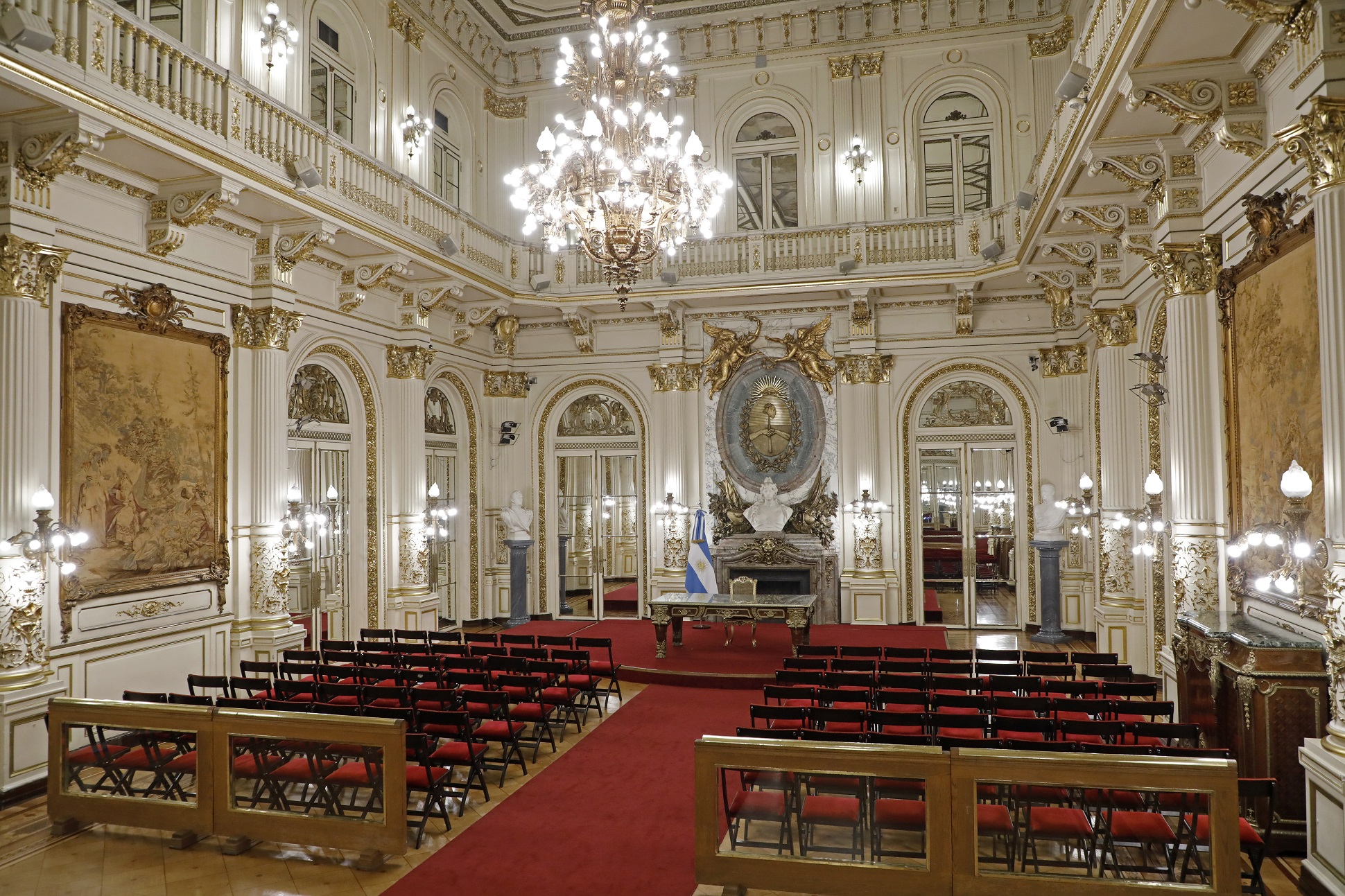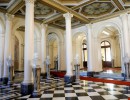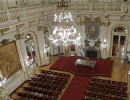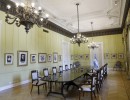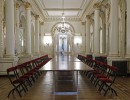Hall of Honour
This area of the Palace, also known as the “Gallery of Presidential Busts” is located on the Rivadavia esplanade and is the entry hall for the Argentine President, Ministers and official guests. Marble busts and other art works by renowned Argentine and foreign artists pay homage to former Argentine Presidents.
Argentine sculptor Lucio Correa Morales was commissioned to make the busts during President Roca’s first term (1880-86). Now, they are commissioned and admitted to the gallery by executive order.
Another art attraction in this hall is a set of two art deco reliefs by Argentine artist José Fioravanti, titled “Praise of Young Motherland” and “The heroic sentiments of our people.” The Italianate ceiling décor resembles the styles favoured in the early 20th century.
President’s elevator
The President’s elevator is on the left of the Hall of Honour. The elevator was a gift from Infanta Isabella of Spain when she visited Argentina in 1910. The carved oak marquetry elevator is embellished with the Argentine Coat of Arms above each crystal mirror.
South Hall
This was originally called the Reception Hall, since it received guests attending formal ceremonies. It leads, on one side, to the stained-glass gallery and the White Hall.
North Hall
Known as the Agreements Room, this was the meeting room of the National Cabinet until 1968. The work table that used to be in the North Hall is now in the Casa Rosada Museum; it had to be replaced with a larger table after the statutory increase in the number of government ministers.
White Hall
The most important official events are held in the beautiful White Hall. The main wall in the hall has a prominent ornamental chimney-shaped front, above which there is the bust of the Republic in Carrara marble, a work by Italian artist Ettore Ximenes, and a National Coat of Arms cast in bronze on marble plaques.
The ensemble is topped off by a pair of angels holding trumpets of glory, made in patina-finished wood. On the left of this ornate ensemble there is a bust of General San Martin, made by Philippine artist Félix Pardo de Tavera. A bust of General Belgrano by Argentine artist Juan Carlos Ferraro was placed on its right side in 1993.
The ceiling has a painting by Italian artist Luis de Servi, in commemoration of two milestones in Argentine history: the May Revolution (1810) and the Declaration of Independence (1816).
A French gold-leafed chandelier hangs from the centre of the ceiling, replete with 456 lamps. The current Slavonian oak flooring, transported from Brussels, was installed in 1903.
Hall of Argentine Science
This hall, one of the few original rooms of the First Government Palace designed in 1882 and used to receive foreign diplomats, pays homage to Carlos Saavedra Lamas, the first Argentine citizen and Latin American to receive a Nobel Peace Prize. The room is decorated with pictures of renowned Argentine scientists who have made important contributions to global scientific research and development. These include: Bernardo Houssay, César Milstein, Luis Federico Leloir, René Favaloro, Perito Francisco Moreno, Manuel Sadosky, Rebeca Gerchsman, Jorge Alberto Sábato, Emma Pérez Ferreira, Florentino Ameghino, José Antonio Balseiro, Ramón Carrillo, Gregorio Klimovsky and Salvador Mazza.
